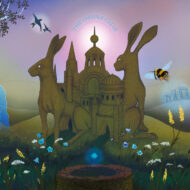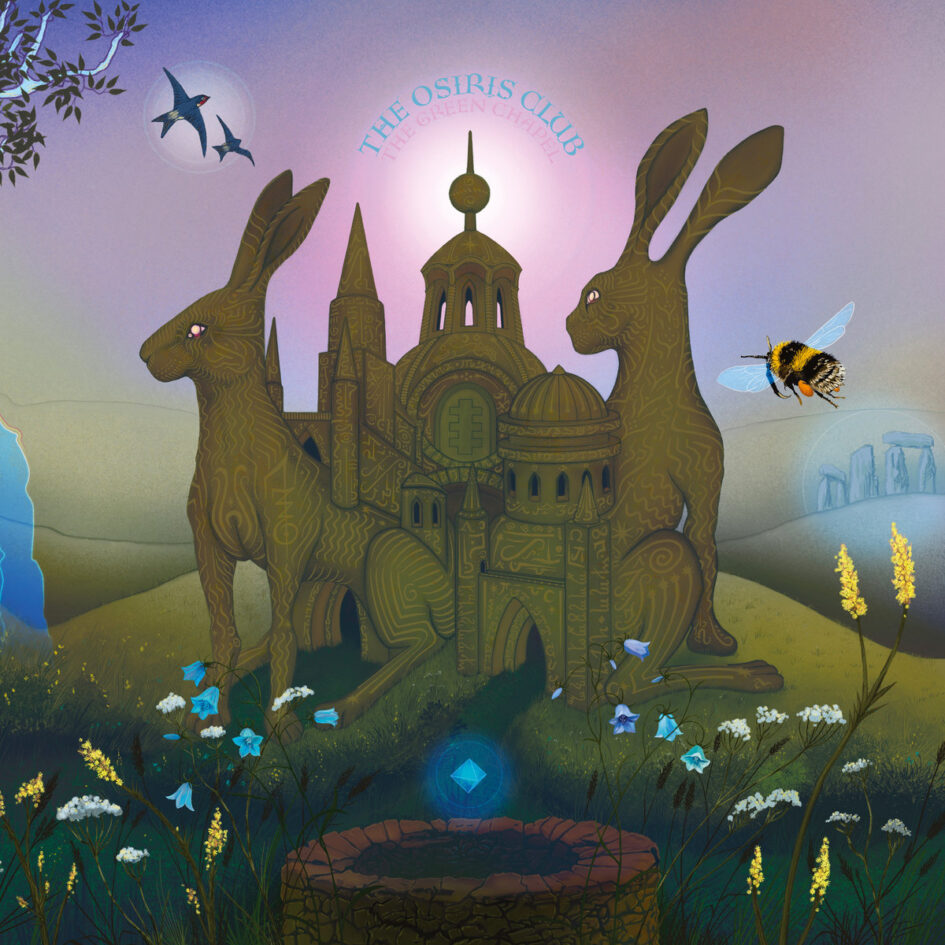 The Osiris Club is a band I feel I ought to know something about. They’re from London, I’ve seen their name many times and I know they’re prog-orientated with other old-style strings to their bow, as it were. In fact there’s an interesting line from the drummer Andrew Prestidge when interviewed by Ave Noctum where he says “My musical influences end around 1979/81, so I’m pretty much off the radar”. That was in 2014, so I’ll allow him to have modernised if he wishes, and just fine if he hasn’t. The interview as a whole is insightful and worth a read by the way. I also appreciated that the same Andrew sent over another current release, “Blazing Worlds – Live at Roadburn and Twicefold of Kind” which self-evidently is a live recording and comprises the 2014 album “Blazing Worlds” plus a couple of other tracks. That was a far more helpful accompaniment and introduction than the mountains of blurb on ancient history and rituals that we sometimes get to read as accompanying homework. I enjoyed this live album and the music on it, which is a series of punchy and inventive retro style prog rock songs with a bit of psychedelic mystery about them. One of the bonus tracks is a version of the Cardiacs’ intriguing tech piece “Leaf Scrapings”. I recommend the live album. It also nicely put me in the mood to listen to “The Green Chapel”.
The Osiris Club is a band I feel I ought to know something about. They’re from London, I’ve seen their name many times and I know they’re prog-orientated with other old-style strings to their bow, as it were. In fact there’s an interesting line from the drummer Andrew Prestidge when interviewed by Ave Noctum where he says “My musical influences end around 1979/81, so I’m pretty much off the radar”. That was in 2014, so I’ll allow him to have modernised if he wishes, and just fine if he hasn’t. The interview as a whole is insightful and worth a read by the way. I also appreciated that the same Andrew sent over another current release, “Blazing Worlds – Live at Roadburn and Twicefold of Kind” which self-evidently is a live recording and comprises the 2014 album “Blazing Worlds” plus a couple of other tracks. That was a far more helpful accompaniment and introduction than the mountains of blurb on ancient history and rituals that we sometimes get to read as accompanying homework. I enjoyed this live album and the music on it, which is a series of punchy and inventive retro style prog rock songs with a bit of psychedelic mystery about them. One of the bonus tracks is a version of the Cardiacs’ intriguing tech piece “Leaf Scrapings”. I recommend the live album. It also nicely put me in the mood to listen to “The Green Chapel”.
Having heard the live album, it wasn’t so surprising to read that “The Green Chapel” is influenced by myths, legends and ghost stories. It did come as a surprise to hear a high pitched vocal at the start of the opening song “Phantasm”. The song is capricious but recognisable in style, matching classic prog rock with edginess and drama. The Osiris Club add a bit of spice and maybe ghoulishness with the keyboard work. “Moscow” is set thematically around Mike Mignola’s dark comic book “Rasputin: The Voice of the Dragon” from the Hellboy series. As a piece of music, it’s harsh and hard rock. As I listened to “The Inmost Light pt1”, I couldn’t get the Beatles “Lucy in the Sky with Diamonds” out of my head. But so too I head a 70s style rock and even a bit of Bowie or Genesis before a transformation into an Ozzy / Sabbath style doom. As a song it works very well, finishing epically but not becoming bombastic or a pastiche of itself. The orchestral wave creates tension before part 2 drifts along hypnotically to a steady rhythm as the vocalist paints a colourful scene. It’s far out but it penetrates the soul with its deep mood. It’s easy to see why The Osiris Club cite Goblin and Voivod as influences. The dreamy vocals have Voivod printed on them. But let’s give The Osiris Club some credit here. The songs have their own personality. The saxophone on “Diamonds in the Wishing Well” adds an atmospheric touch to the solid melody. “Count Magnus” is at the darker and spookier end but didn’t really get going as a song. The album “The Green Chapel” seems very familiar in one sense, particularly for anyone with knowledge of 1970s rock, but it can be like an interesting experiment with bland parts intervening from time to time. The title track “The Green Chapel” is in four parts. The first part starts slowly and deliberately, breaking off for a stripped-down piece of melancholic reflection and returning to the hazy, woozy psychedelic rock that it started with. Part II “Blind Hare and a Pale Lady” is a lovely, acoustic piece with quiet vocals, melancholy and vivid images: “passengers left waiting … messages left unsent”. All the while it’s as if we’re in a psychedelic haze, never more so than when listening to the third part “Winter’s End”. The melancholic sway returns for “My Lord the Sun”, the fourth part. Throughout I found it difficult not to find comparison with other artists, which isn’t helpful, and here I found myself listening to the reflections of Pink Floyd, but what is not in doubt is the ambient mood and the wistful reflections that The Osiris Club create here. The final song “The Crow” captures the dream-like state that for me much of this work represents.
“The Green Chapel” is a thoughtful and an imaginative work, musically born of a bygone era and deliberately shaped to create a distant folkloric world of images, reflections and dreams.
(7.5/10 Andrew Doherty)

Leave a Reply